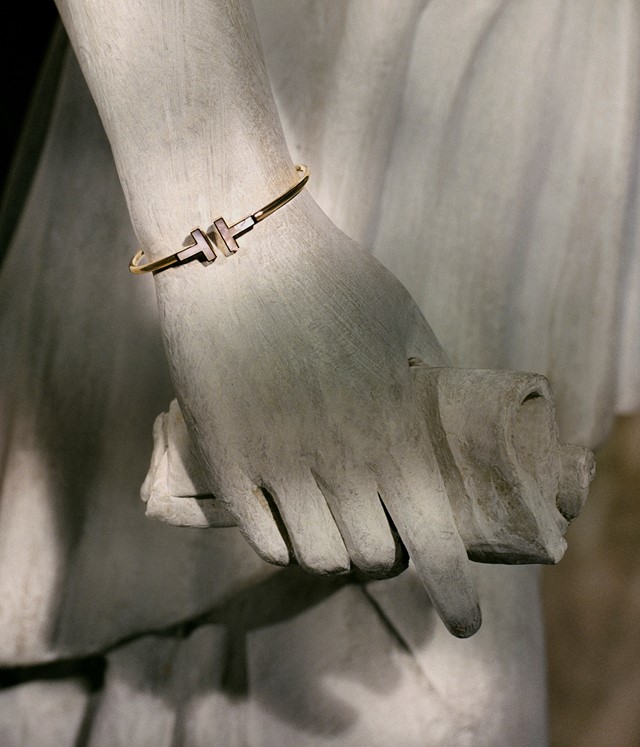In the first of a new series honing in on one of the precious stones used in the latest Tiffany T designs, Ana Kinsella looks at the cultural history of mother-of-pearl
Tiffany & CoEvery now and then, nature has the power to deceive us. At first glance, the hard, pearly interior of a mollusc shell might seem like nothing more than a quirk of evolution—and one that looks quite pretty by our own human standards. Mother-of-pearl, or “nacre,” is the same substance as the outermost layer of an actual pearl. Yet when found inside molluscs like oysters, mussels and various cephalopods, the material has a strength and resilience that protects the creature’s soft tissue within from parasites and foreign particles. And while nacre formation remains something of a mystery, from this “ugliness” comes something beautiful.
Perhaps that’s why the material has had such a storied history in the world of art and design. Mother-of-pearl’s decorative usage shows that it can serve a functional purpose too. Walk through the corridors of the Victoria & Albert Museum and you’ll spot mother-of-pearl in 18th-century snuff boxes, on a pair of 17th-century bellows, on lacquered Korean jewellery boxes and Victorian teething rings. While we might see it as a lustrous material, used mostly for ornamental flourishes, mother-of-pearl has long been chosen by artisans for its durability and strength.
But amongst the floral jewellery boxes and delicate buttons on elegant blouses, mother-of-pearl has its own stories to tell. For instance, one thing you’ll find, trawling through the archives at the V&A, are small reliefs carved into mother-of-pearl discs from 15th-century Europe. The material was favoured by artisans who depicted religious scenes, often sold to Renaissance-era pilgrims, as they traversed around the continent in search of higher meaning. In a time long before publishing or photographs, these small reliefs, carved into nacre’s pearly surface, could tell and retell stories of a person’s belief, long after the memory of the pilgrimage itself had faded. Still employed in keepsakes and jewellery, mother-of-pearl has an iridescent beauty that spans centuries and cultures, right up to the present day.
